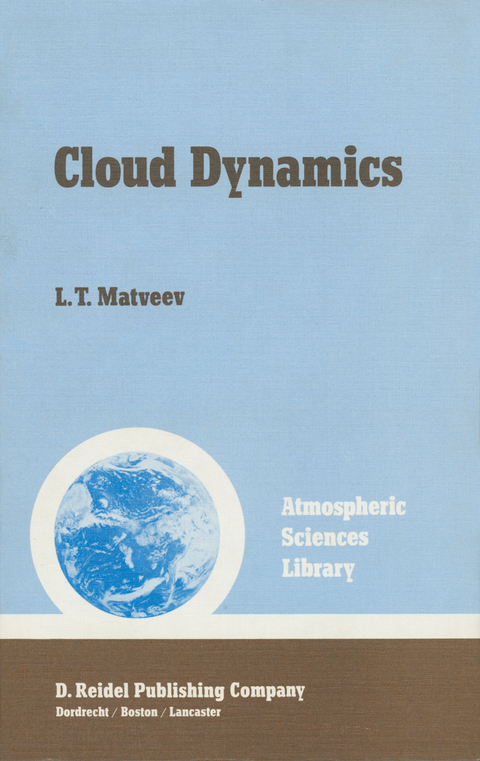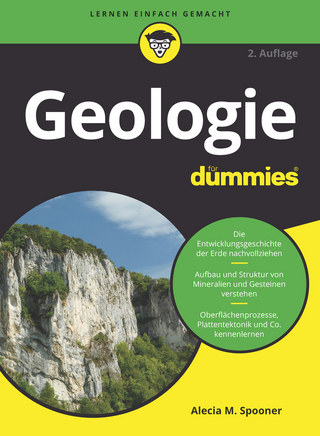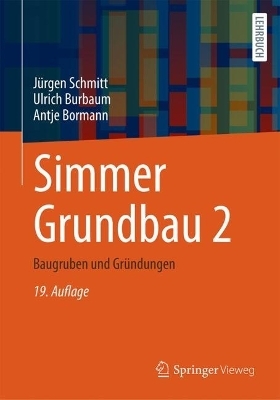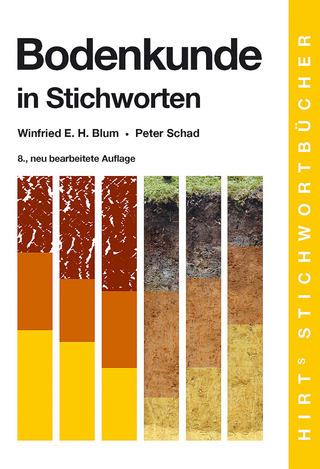
Cloud Dynamics
Kluwer Academic Publishers (Verlag)
978-90-277-1737-5 (ISBN)
1. Equations of Heat and Moisture Transfer in a Turbulent Atmosphere.- 1.1. Water-vapor influx (balance).- 1.2. Heat influx (balance).- 1.3. Influxes of heat and water vapor in moist saturated air (in a cloud).- 1.4. Equations for temperature and condensation rate of water vapor.- 1.5. Cloud-droplet distribution functions.- 1.6. Equations of stochastic condensation.- 2. Models of Stratiform-Cloud Formation.- 2.1. Solution of the system of equations for heat and moisture exchange in a turbulent atmosphere.- 2.2. Formation and evolution of stratiform clouds.- 2.3. Precipitation modeling and the microphysical quantities of a stratus cloud.- 2.4. Modeling of frontal cloudiness.- 2.5. The lower cloud boundary.- 2.6. The role of turbulence and radiation in the formation of stratus clouds in the Arctic.- 3. Models of Fog Formation.- 3.1. Radiation fogs.- 3.2. Evaporation fogs.- 3.3. Advection fogs.- 3.4. On urban fogs.- 4. Atmospheric Moisture Content and Cloud Water Reserves.- 4.1. Modeling fields of atmospheric moisture content and cloud water reserves.- 4.2. The water-vapor in an air column and cloud water reserves according to data of radio and aircraft sounding.- 4.3. The atmospheric moisture content and cloud water reserves according to radiometric data.- 5. The Hydrodynamic Prediction of Cloudiness and Precipitation.- 5.1. The first models of precipitation prediction.- 5.2. A hydrodynamic five-level model for predicting humidity and cloudiness.- 5.3. A ten-level model for predicting frontal precipitation.- 5.4. A numerical model for predicting the formation of stratus in the atmospheric boundary layer.- 5.5. A numerical model for predicting cloudiness and precipitation.- 5.6. A synoptic-hydrodynamic method for predicting precipitation.- 6. Mesoscale Atmospheric Motionsand Cloudiness.- 6.1. Some experimental data on mesoscale clouds.- 6.2. A numerical model of convection in an unstable layer.- 6.3. Ensembles of cumulus clouds.- 6.4. The albedo of a cumulus field.- 6.5. Cloud formation in a mountainous region.- 7. The Vertical Structure of a Cloud Field.- 7.1. Correlations between cloudiness characteristics.- 7.2. Statistical methods for determining cloud boundaries and temperatures.- 7.3. The statistical correlation between temperature increments in time.- 7.4. Conditions preceding and accompanying cloud formation.- 7.5. Frontal clouds; precipitation and cloud water content.- 8. Statistical Data of Clouds and Cloud Behavior.- 8.1. Cloud boundaries and depth; amount of cloud cover.- 8.2. Air humidity in clouds.- 8.3. Cloud water content.- 8.4. Phase states of clouds.- 8.5. Horizontal dimensions and fluctuations of cloud fields.- 9. The Global Cloudiness Field.- 9.1. Seasonal average of the zonal cloudiness field.- 9.2. Cloud-field averages over large areas.- 9.3. Cloud-cover distribution density and distribution functions and their approximation.- 9.4. Cloud-cover correlation functions.- 9.5. Parametrization of the global cloudiness field using complete systems of spectral functions.- 10. The Statistical Structure of the Humiduty Field in the Atmosphere.- 10.1. Expansion in natural orthogonal functions.- 10.2. The effect of cloudiness on the vertical profiles of temperature and humidity.- 10.3. Correlations between variations of specific humidity.- Conclusion.- References.
| Erscheint lt. Verlag | 31.3.1984 |
|---|---|
| Reihe/Serie | Atmospheric and Oceanographic Sciences Library ; 2 |
| Zusatzinfo | 356 p. |
| Verlagsort | Dordrecht |
| Sprache | englisch |
| Themenwelt | Naturwissenschaften ► Geowissenschaften ► Geologie |
| Naturwissenschaften ► Geowissenschaften ► Meteorologie / Klimatologie | |
| ISBN-10 | 90-277-1737-0 / 9027717370 |
| ISBN-13 | 978-90-277-1737-5 / 9789027717375 |
| Zustand | Neuware |
| Informationen gemäß Produktsicherheitsverordnung (GPSR) | |
| Haben Sie eine Frage zum Produkt? |
aus dem Bereich


